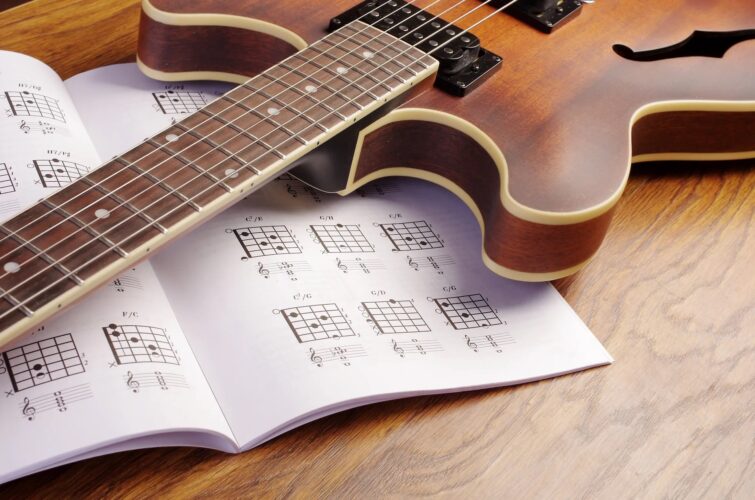The keyboard, with its rows of black and white keys, holds the potential to unlock a universe of musical expression. But venturing beyond single notes requires venturing into the captivating realm of chords – the building blocks of harmony in music. For online learners embarking on their keyboard journey, understanding and building major and minor chords can seem like magic. Fear not, aspiring musicians! This guide, along with the wealth of online keyboard lessons, will shed light on these fundamental chords, transforming them from mysteries into musical tools at your fingertips.
Demystifying Chords: Building Blocks of Harmony
A chord is a combination of three or more notes played together, creating a unique and pleasing sound. Major and minor chords are the cornerstones of Western music, forming the foundation of countless melodies and harmonies. Here’s a breakdown of these essential chords:
- Major Chords: These chords evoke a bright, happy, and uplifting feeling. They are constructed using a specific formula: root note + major third + perfect fifth.
- Root Note: This is the foundation of the chord and gives it its name.
- Major Third: This note is played four half-steps (two whole steps) above the root note.
- Perfect Fifth: This note is played seven half-steps above the root note.
- Minor Chords: These chords create a darker, more melancholic, or mysterious feeling. They are constructed using a slightly different formula: root note + minor third + perfect fifth.
- Minor Third: This note is played three half-steps above the root note, creating a distinct sound compared to the major third.
Visualizing Chords on the Keyboard:
While understanding the formulas is crucial, visualizing these chords on the keyboard is essential for online learners. Here’s how to find major and minor chords for a specific root note:
- Major Chords: Imagine the white keys as the natural notes (C, D, E, F, G, A, B). To find a major chord for any white key, simply count up four half-steps (two white keys) for the major third, and then seven half-steps (five white keys) for the perfect fifth.
- Minor Chords: Follow the same counting process as major chords, but for the minor third, count up only three half-steps (one white key and one black key) from the root note.
Online Lessons: Your Key to Chord Mastery
The beauty of the digital age lies in the abundance of online keyboard lessons dedicated to teaching major and minor chords. These lessons offer a clear advantage for online learners:
- Visual Demonstrations: Watch instructors demonstrate chord formations on the keyboard, providing a clear visual reference alongside the explanations.
- Interactive Exercises: Many online lessons offer interactive exercises that allow you to practice building and playing major and minor chords in different keys.
- Slow-Motion Breakdowns: Online lessons often allow you to adjust the playback speed, enabling you to learn chord formations at a comfortable pace.
- Multiple Learning Styles: Find online instructors who cater to your preferred learning style, whether it’s visual demonstrations, step-by-step explanations, or a combination of both.
Tips for Mastering Major and Minor Chords:
- Start with Simple Chords: Begin with the C major chord (C, E, G) and the A minor chord (A, C, E) to solidify your understanding of the formulas and finger placement.
- Practice Regularly: Short, dedicated practice sessions are key. Aim for 10-15 minutes daily of focused practice on building and switching between major and minor chords.
- Use Online Resources: Take advantage of the wealth of online resources beyond lessons. Websites and apps offer interactive chord charts and tools to help you visualize and practice chords.
- Don’t Be Discouraged: Building muscle memory and finger independence takes time. Be patient, celebrate small improvements, and enjoy the process of unlocking the magic of chords.
The Melodies Await!
With a solid understanding of major and minor chords, and the guidance of online keyboard lessons, you’ll be well on your way to crafting beautiful melodies and harmonies. Remember, practice is key! So, put your newfound knowledge to the test, explore different chord progressions, and watch as your musical journey takes flight. The keyboard awaits, ready to transform your fingertips into instruments of musical expression.

